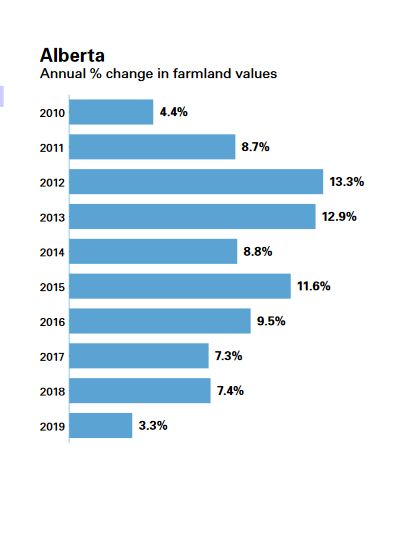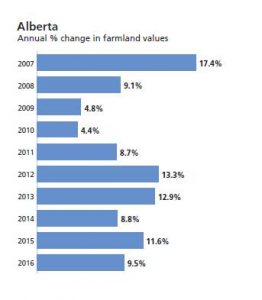In 2024 there were a total of 119 residential properties sold through MLS. The average sale price for single family homes was $282,258. The average marketing period was 52 days, The Alberta regional dashboard reported a residential vacancy rate of less than 1%. and this was supported by property managers. The market is expected to remain strong throughout 2025.
Category: Market News
Drumheller And Area Real Estate Market News, MLS Statistics, And Other Information
Property Value Report 2023
Real estate value increases for the Drumheller market appear to be cooling after significant increases from 2020 to 2022. The historical sale price trend for all types of property in Drumheller is shown below.

As can be seen in the graph, low interest rates drove values up by 15-30% from 2020 to 2022. However, in 2023 we have seen mortgage rates hovering around 5% or better. This has led to a decrease in the overall number of sales and values have more or less stabilized throughout the market.
Drumheller Real Estate Update 2022
The number of single-family residential sales in Drumheller increased significantly between 2020 and 2021. While year 2022 is not yet over, the sales are on track to reach the 182 sales made in 2021. Sales of detached homes in Alberta are down 22% year-over-year (reported September 2022). Average sale prices for single family homes in Drumheller so far in 2022 has been $238,304 which is an increase from the average of $227,876 in 2021.
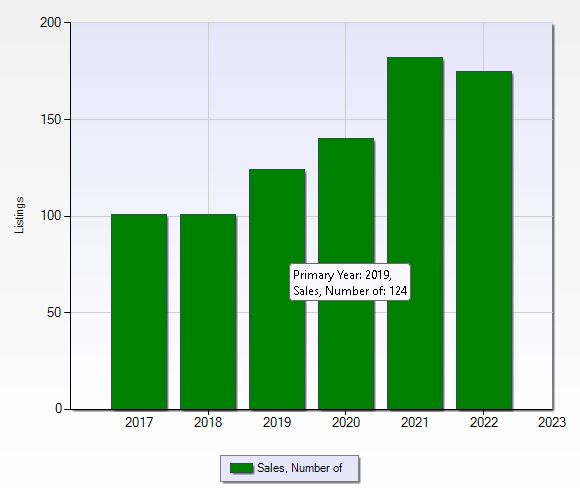
2020 Farm Land Value Report
Farmland values in Alberta increased at a higher pace in 2020, with an average
provincial increase of 6% compared to 3.3% in 2019. Improved growing and harvest conditions for 2020, along with increased grain shipments, made this year much better than the past few. Strong crop receipts improved the overall optimism within Alberta agriculture, Central Alberta saw the highest average farmland value increase in the province at 9.6%. The stronger increase from recent years was due to better-than-average growing conditions, a healthy supply management sector and robust grain shipments. Southern region saw the lowest average farmland value increase in 2020 at 2.9%. However, irrigated land in this region, with its concentration of potato processing facilities, had an average 7.6% value increase.
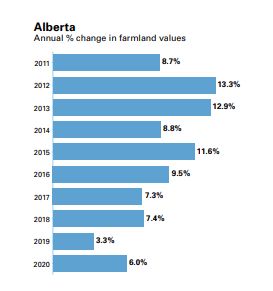
FCC 2019 Farm Land Values Report
Average farmland values in Alberta increased at a much slower pace in 2019 at 3.3%, compared to an increase of 7.4% in 2018. The larger increases were in the south and central regions, while values showed incrementally smaller increases moving northward. Alberta agriculture faced several challenges in 2019 with weaker economic conditions, volatile commodity prices and adverse weather contributing to a smaller average increase in farmland values. Many areas of the province were impacted by a September snowfall, so harvest was delayed or never completed in some areas and the overall quality was down. Potatoes in the southern region were the bright light in 2019 with an increased demand from the processing sector, which contributed to a 3.9% increase in the average farmland value for the region. With an additional potato processing company in the Lethbridge area, producers were given an incentive to increase their irrigated potato production. Dry conditions, however, negatively impacted values for unirrigated land. Northern and Central regions of the province reported stable to moderate increases in farmland values, 1.5% to 5.3%, respectively. Moisture conditions in the western part of the northern region were above average, reducing yield and quality. Many areas of the Peace region experienced periods of forest fires and related smoke. Frost and dry conditions were followed by an early snowfall, which made for a challenging season that resulted in a modest 1.1% increase in average farmland values. Despite this, there were a few pockets in the Peace region that experienced a successful season and land sales continued to be strong, but the increases are still lower than the previous year.
2017 Farm Land Values
The average value of Alberta farmland increased 7.3% in 2017, following average gains of 9.5% in 2016 and 11.6% in 2015. Values were driven by both demand and weather. While the province experienced steady demand in all regions, there were pocked of very strong demand from competing farm operations as well areas of decreased demand due to overly dry conditions. Southern Alberta was impacted in 2017 by a lack of rainfall on dryland, however this was offset by the pockets of increased demand. The Southern Alberta region’s irrigated land saw a stead to increase demand combined with limited supply leading to higher overall increase of 11.4%.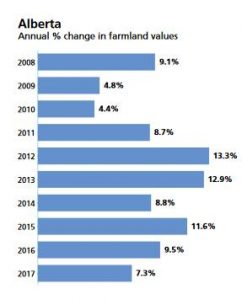
Drumheller Real Estate Update September 30th, 2017
Average sale price in Drumheller for the first 9 months of 2017 was $200,702 with 67 sales, compared to 80 sales for the same period in 2016 that had an average price of $210,460 (down 4.6%).
Alberta 2016 Farm Land Value Increases
The average value of Alberta farmland increased 9.5 per cent in 2016, following gains of
11.6 per cent in 2015 and 8.8 per cent in 2014. Values in the province have continued to
climb since 1993.Despite an economy hurt by depressed oil and gas prices, Alberta reported the second highest average farmland values increase in Canada, eclipsed only by Prince Edward Island. The province’s 9.5 per cent average increase was largely buoyed by grain sector expansion in the north, as well as activity from non-traditional buyers in the south. While competition for available farmland also increased prices in other regions, farmland on the outskirts of urban centres saw reduced prices due to the general economic downturn. Some adverse weather, as well as depressed oil and gas prices, placed downward pressure on farmland values, while large farm expansion and competition
between beef and grains sectors in some areas helped boost the value of marginal cultivated forage or pasture acres.
Drumheller Real Estate Update 1st quarter 2017
Average overall sale prices have increased in Drumheller. This time last year there were 16 sales with an average sale price of $176,664. So far in 2017 there have also been 16 sales, but with an average price of $201,275. Drumheller has 91 homes for sale on the MLS right now as well as many homes being sold privately.
Drumheller Real Estate Report (September 30th, 2016)
Average sale price for in Drumheller has seen a significant drop from this time last year. This was partially due to the sale of some older smaller homes. The average sale price for the first 9 months of 2016 was $210,500 with a total of 80 sales. 2015 had 82 sales for the first 9 months. There are currently 95 homes on the market. This is considered a surplus.

